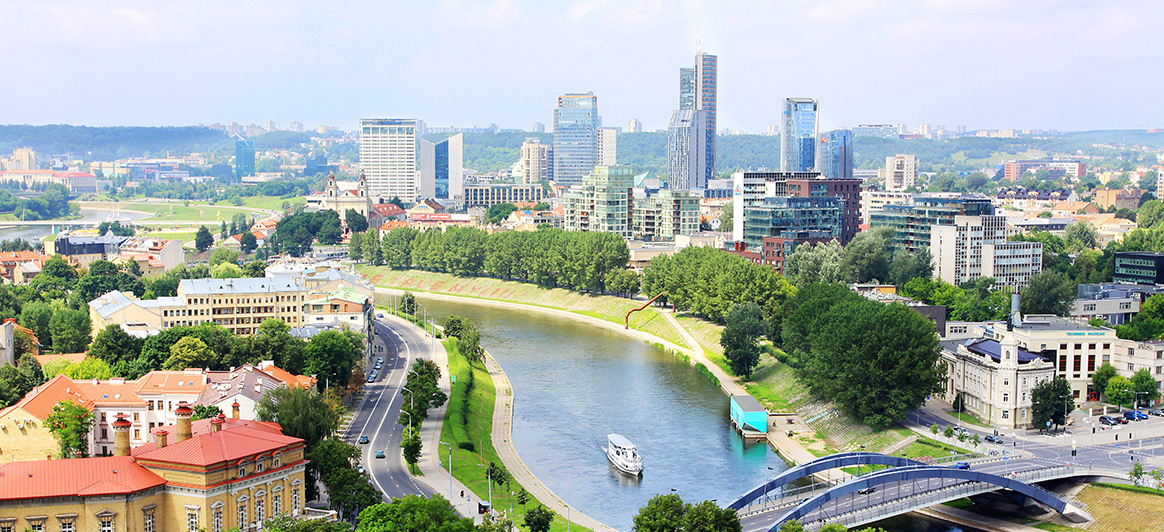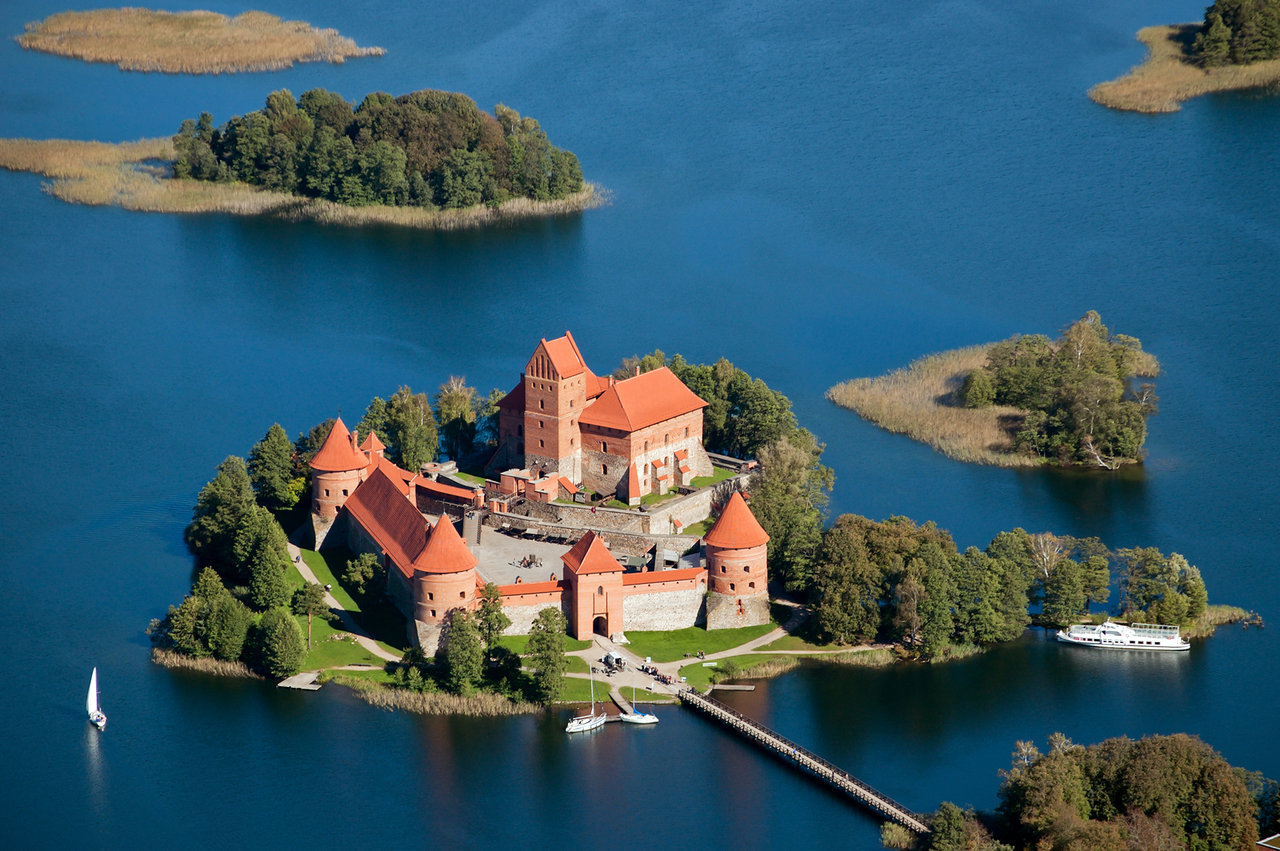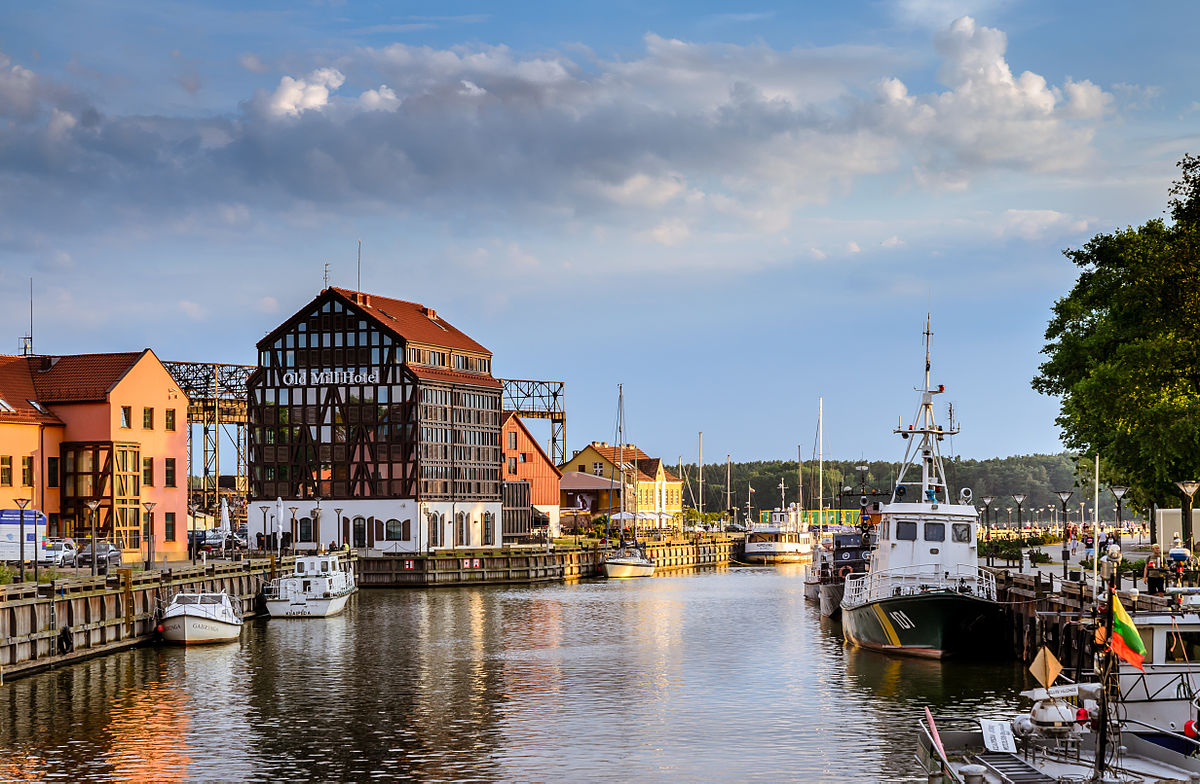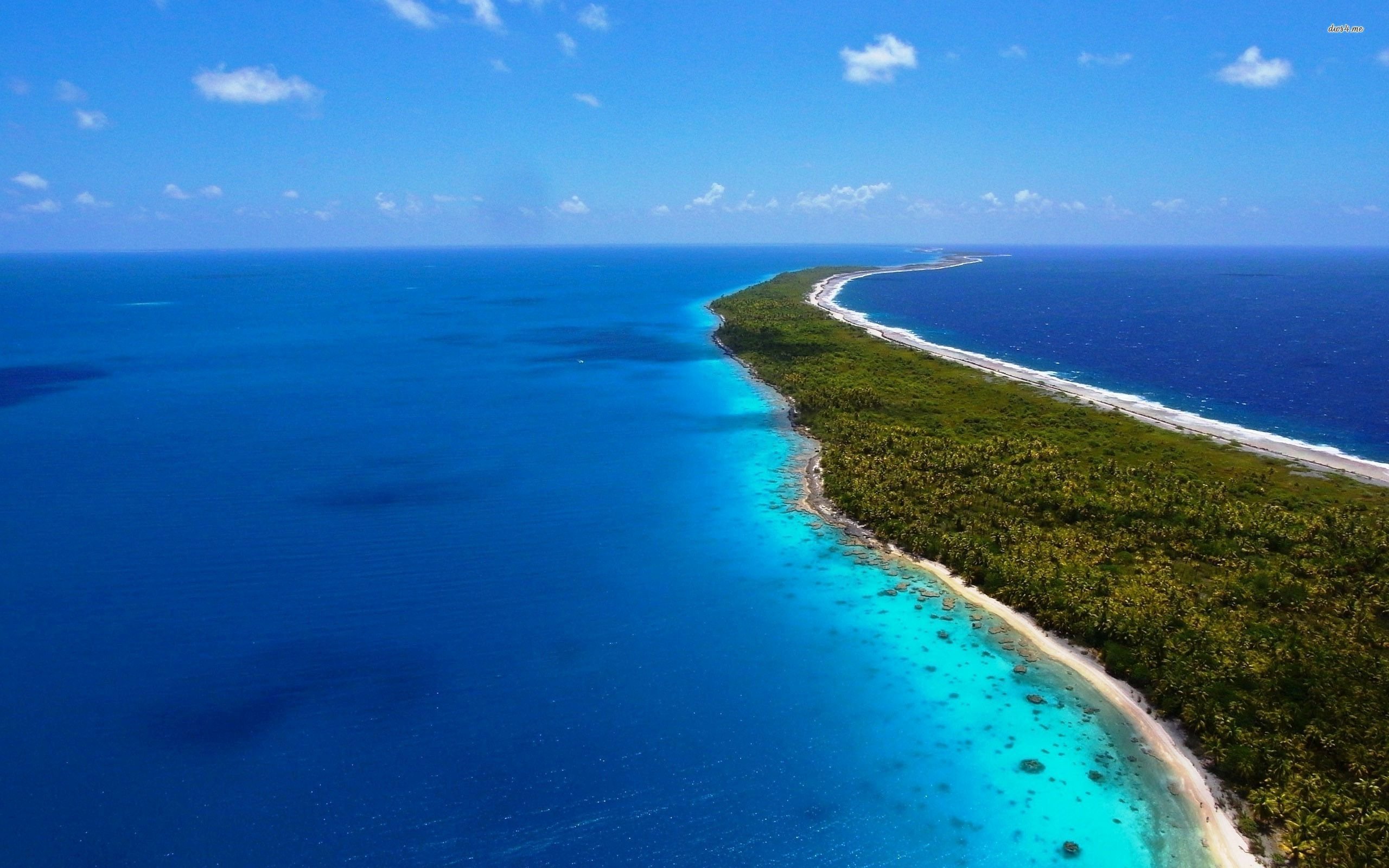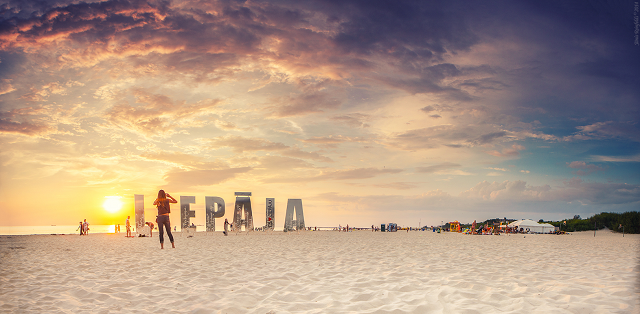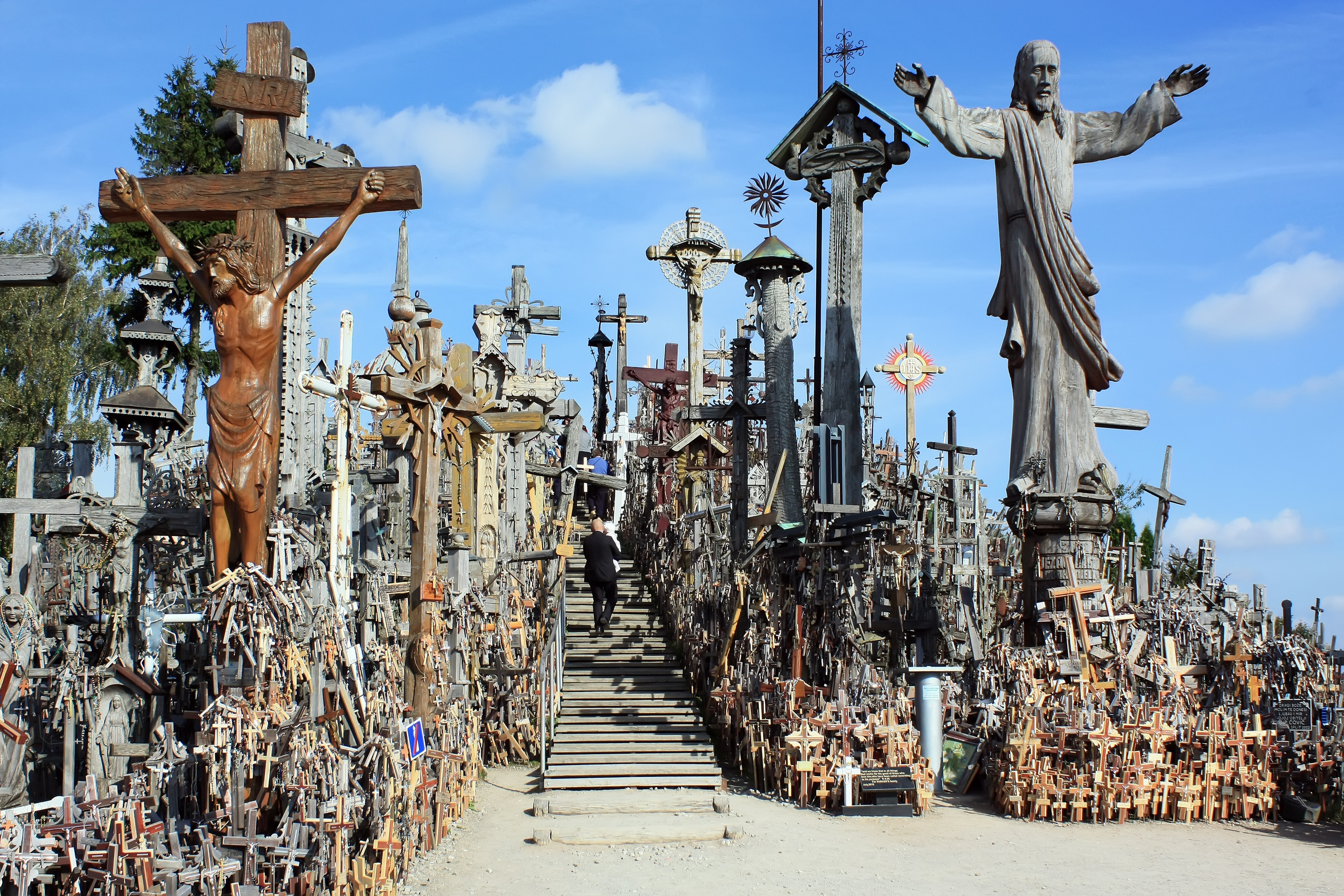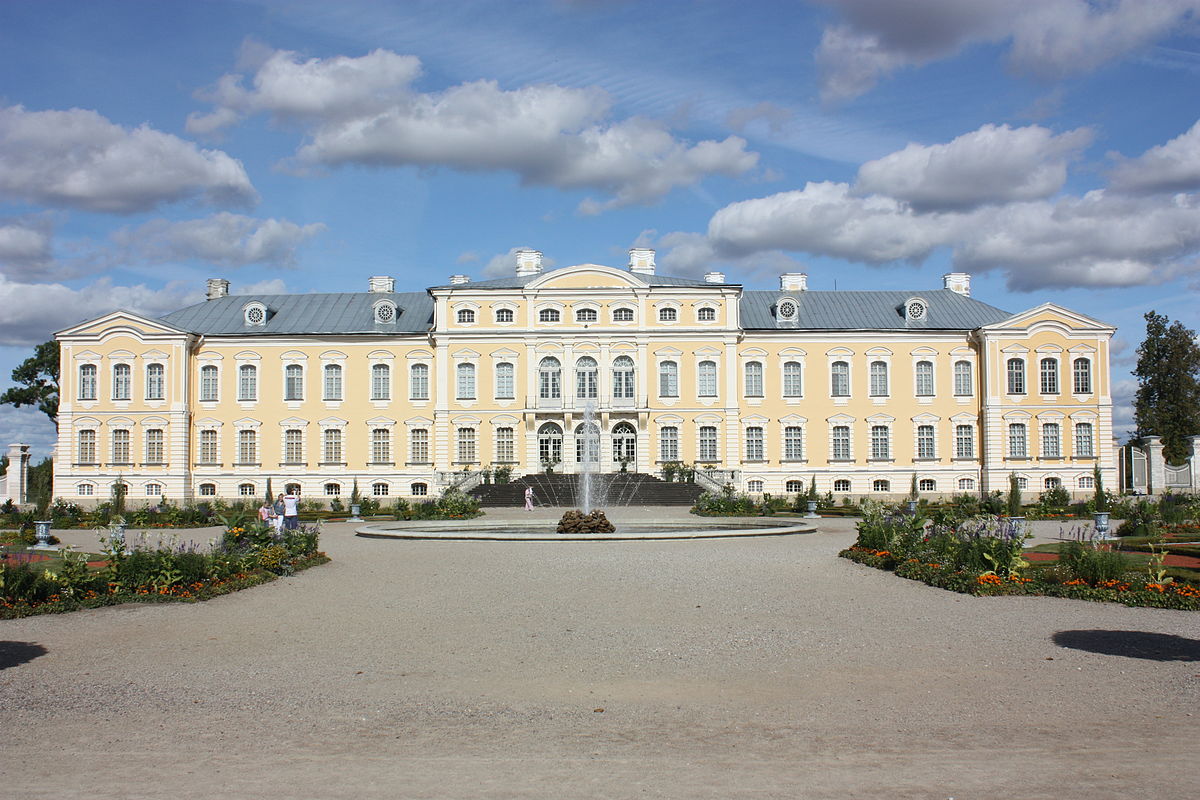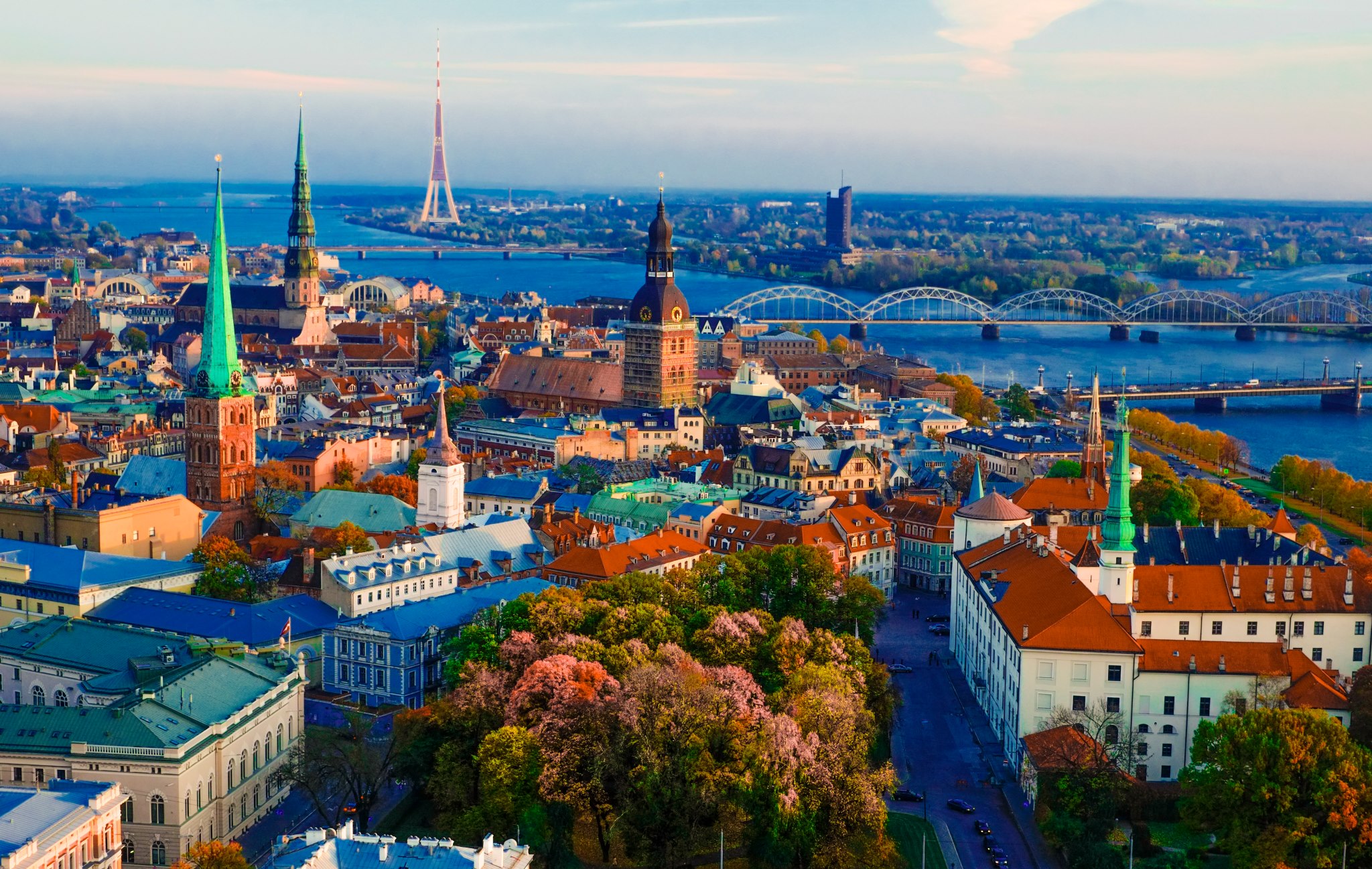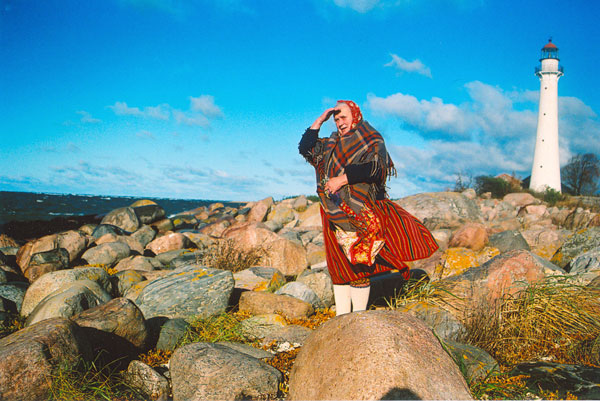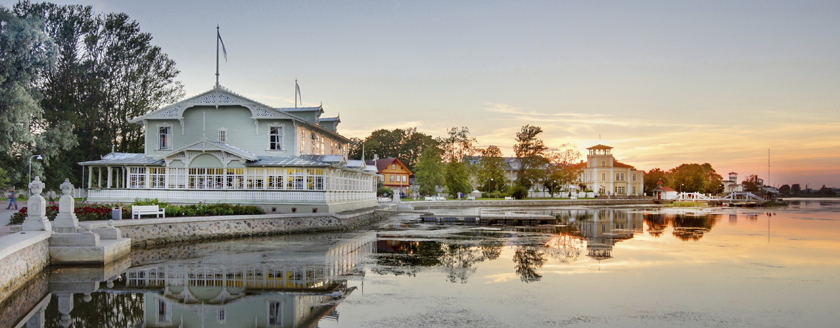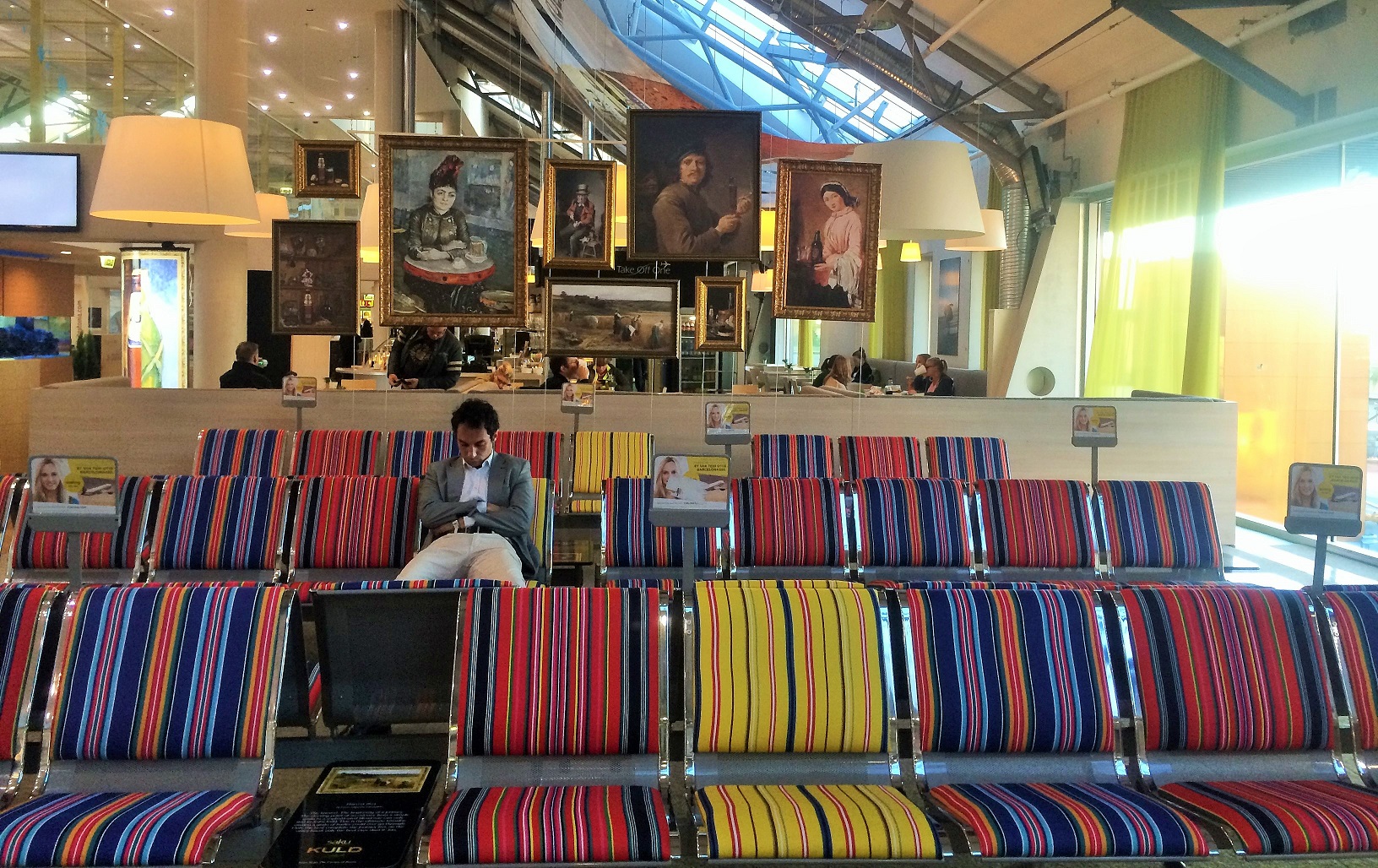14 Days in Baltics
… including NIDA, KLAIPEDA, KIHNU ISLAND and SAAREMAA
An all-in comprehensive tour in the Baltics that allows you to discover everything that makes Baltic States special. It encompasses most of the highlights included in our 7 day tour of the Baltics, but has some interesting extra stops: beautiful Nida area, UNESCO protected Kihnu Island and Estonians favourite vacation spot, the 2nd biggest island in Baltic Sea – Saaremaa.
14 Days in Baltics Itinerary (April-September)
DAY 1 VILNIUS
- Arrival in Tallinn. Meet with private 49-seater coach and transfer to the hotel with English speaking assistent.
- Dinner at the hotel (3 course)
- Overnight in Vilnius
DAY 2 VILNIUS
- Breakfast at the hotel
- Morning sightseeing tour in Vilnius with English peaking guide
VILNIUS – the capital of Lithuania, situated on the banks of the rivers Neris and Vilnia, first time was mentioned in 1323 when Grand Duke Gediminas built a Castle there. Today the tower of this Castle is one of the landmarks and symbols of the city. The old Town of Vilnius is oneof the biggest (360 ha) and oldest in Eastern Europe.
The magic atmosphere, the magnificent splendid architectural blend of Gothic, Renaissance, Baroque and Classicism styles makes this wonderful city to explore. In 1994 Vilnius Od Town was included into UNESCO heritage register.
- Lunch at a local restaurant (2-course)
- Afternoon free time in Vilnius
- Dinner at a local restaurant (3-course)
- Overnight in Vilnius
DAY 3 VILNIUS-TRAKAI-KAUNAS
- Breakfast at the hotel
- Departure towards Kaunas. Visit Trakai Castle en route, excursion with English speaking guide.
- Entrance to Trakai Castle
Trakai History Museum and Island Castle are the objects representing Lithuanian culture and history, there come almost all delegations that are for a visit in Lithuania. The Castle was honoured with the visit paid by Danish Queen Margaret II, Swedish King Carl XVI Gustav together with Queen Silvia, the presidents of Hungary, Estonia, Greece, Kazakhstan, China, Latvia, Poland, Macedonia, Portugal, Ukraine and Uzbek; Prime Ministers, Ministers, Ambassadors of many countries paid their visits to Trakai History Museum and Island Castle. In the Great Chamber of Island Castle some intergovernmental treaties were signed.
- Lunch at a local restaurant in Trakai (2-course)
- Arrival to Kaunas, check in at the hotel, free time.
- Dinner at a local restaurant (3-course)
- Overnight in Kaunas
DAY 4 KAUNAS-KLAIPEDA
- Breakfast at the hotel
- Morning sightseeing tour in Kaunas with English speaking guide.
Kaunas is the second-largest city in Lithuania and has historically been a leading centre of Lithuanian economic, academic, and cultural life. Kaunas was the biggest city and the centre of a county in Trakai Municipality of the Grand Duchy of Lithuania since 1413. In the Russian Empire, it was the capital of the Kaunas Governorate from 1843 to 1915. It became the only temporary capital city in Europe during the interwar period. Now it is the capital of Kaunas County, the seat of the Kaunas city municipality and the Kaunas District Municipality. It is also the seat of the Roman Catholic Archdiocese of Kaunas. Kaunas is located at the confluence of the two largest Lithuanian rivers, the Nemunas and the Neris, and near the Kaunas Reservoir, the largest body of water entirely in Lithuania.
- Sightseeing tour includes the entrance to Sugihara Memorial Museum and Kaunas Castle.
- Lunch at a local restaurant (2-course)
- Departure towards Klaipeda
- Arrival to Klaipeda, check-in, dinner at the hotel (3-course)
- Overnight in Klaipeda
DAY 5 KLAIPEDA-NIDA-KLAIPEDA
- Breakfast at the hotel
- Meet with English speaking guide and proceed for a full day sightseeing tour to Curonian spit, Nida and Klaipeda.
The Curonian Spit is a unique and vulnerable, sandy and wooded cultural landscape on a coastal spit which features small Curonian lagoon settlements. The Spit was formed by the sea, wind and human activity and continues to be shaped by them. Rich with an abundance of unique natural and cultural features, it has retained its social and cultural importance. Local communities adapted to the changes in the natural environment in order to survive. This interaction between humans and nature shaped the Curonian Spit cultural landscape.
Human habitation of this elongated sand dune peninsula, 98 km long and 0.4-4 km wide, dates back to prehistoric times. Throughout this period it has been threatened by the natural forces of wind and waves. Its survival to the present day has been made possible only as a result of ceaseless human efforts to combat the erosion of the Spit, dramatically illustrated by continuing stabilisation and reforestation projects.
- Sightseeing tour includes the entrance to Thomas Mann Museum.
- Lunch at a local restaurant in Nida (2-course)
- Departure back in Klaipeda, for a short sightseeing tour.
- Dinner at a local restaurant in Klaipeda (3-course)
- Overnight in Klaipeda
DAY 6 KLAIPEDA-SIAULIAI-RUNDALE-LIEPAJA
- Breakfast at the hotel
- Departure Klaipeda towards Latvia, Liepaja via Siauliai and Pilsarundale.
- Visit Siauliai, Hill of Crosses en route
The Hill of Crosses (Lithuanian: About this sound Kryžių kalnas is a site of pilgrimage about 12 km north of the city of Šiauliai, in northern Lithuania. The precise origin of the practice of leaving crosses on the hill is uncertain, but it is believed that the first crosses were placed on the former Jurgaičiai or Domantai hill fort after the 1831 Uprising. Over the generations thousands of tiny effigies and rosaries have been brought here by Catholic pilgrims. The exact number of crosses is unknown, but estimates put it at about 55,000 in 1990 and 100,000 in 2006.
- Arrival to Pilsarundale and enjoy 2-course lunch at Rundale Palace restaurant.
- After lunch, proceed for a short route excursion of Rundale Palace with museum English speaking guide.
The Rundale Palace is set amidst the fertile Zemgale Plains in the south of Latvia. Most of the interior decorations were created between 1765 and 1768 when a sculptor from Berlin Johann Michael Graff, and Italian painters from St. Petersburg Francesco Martini and Carlo Zucchi worked at the palace.
The representation rooms in the eastern wing of the palace – the Gilt Hall, the White Hall, and the Great Gallery – are open to the public. The central block accommodates the Duke’s suite with reception parlours and private rooms, and the eastern block – a fully restored suite of Duchess’s rooms.
Continue the route to Liepaja.
- Arrival to Liepaja, check-in, dinner (3-course) at the hotel.
- Overnight in Liepaja
DAY 7 LIEPAJA-KULDIGA-RIGA
- Breakfast at the hotel
- Meet with English speaking guide and proceed for a full day sightseeing tour of Liepaja and Kuldiga.
Set on Latvia’s ruggedly beautiful west coast, Liepaja (Liepāja) is a proud port city with an artistic soul. With its pristine Blue Flag beach, market stalls offering fresh local fish and the local specialty cod dish Liepājas menciņi on every menu, Liepaja is a place with the sea running through its veins.
And its affectionate nickname “the city where the wind is born” reflects a town with a strong individualistic streak.
- Lunch at a local restaurant in Liepaja (2-course)
- Departure towards Kuldiga and continue the full day sightseeing tour.
Long ago bypassed by a busy world, Kuldiga (Kuldīga) is an architectural gem preserved amidst magnificent natural landscapes.
Nicknamed “the Venice of the North,” Kuldiga is an endearing blend of flowing water and historic buildings on the candidate list for UNESCO world heritage listing.
Having enjoyed its heyday in the 17th century as part of the Duchy of Kurzeme, the centre of Kuldiga hosts magnificent Baroque structures like the Town Hall.
- Arrival to Riga, dinner at a local restaurant (3-course)
- Overnight in Riga
DAY 8 RIGA
- Breakfast at the hotel
- Morning sightseeing tour in Riga with English speaking guide.
The biggest metropolis in the Baltics, Riga perfectly blends timeless tradition and cutting edge cool.
In its 800 years of turbulent history, everyone from German knights to Swedish kings and Soviet commissars have left their footprints, and today Latvia’s capital is an exciting European metropolis at the crossroads of eastern and northern Europe.
Riga’s astonishing skyline tells the story, as the timeless Gothic spires in the Old Town mingle with the fantastic facades of one of the world’s richest collections of Art Nouveau on the grand boulevards.
Riga is a UNESCO World Heritage site of cobblestones and breathtaking river views, as well as Europe’s Wifi capital with almost 1,000 spots to get online for free.
- Lunch at a local restaurant (2-course)
- Afternoon free time in Riga
- Dinner at a local restaurant (3-course)
- Overnight in Riga
DAY 9 RIGA-SIGULDA-PÄRNU
- Breakfast at the hotel
- After breakfast, departure towards the summer capital of Estonia, Pärnu.
En route, stopover in Sigulda, enjoy a walk in Gauja National Park and entrance to Turaida Castle, excursion with Turaida Castle English speaking guide.
The territory of Museum Reserve covers 43.63 ha and is rich in archaeological, architectural and art monuments, which provide information about historical events of one thousand years, starting from the 11th century. The aim of the museum reserve is to preserve for future generations one of the oldest sets of cultural monuments inLatvia– the one that is found in the historical centre of Turaida. The region has been declared to be a specifically protected cultural monument with specific historical, scientific and cultural values which are a part of the national wealth of the Republic of Latvia.
- Lunch at a local restaurant in Sigulda (2-course)
- After lunch, continue the route towards Pärnu
- Afternoon sightseeing tour in Pärnu with English speaking guide.
The rich history of Pärnu and the joyful daily life offer something for everyone. The centre of Pärnu, the lovely parks and the resort area with its famous sandy beach and promenade invite you for long walks. There are sights to be seen dating to the distant Middle Ages, the elegant early years of the resort, the long Soviet era as well as the modern times with their fast-paced development.
- Dinner at a local restaurant (3 course)
- Overnight in Pärnu
DAY 10 PÄRNU-KIHNU ISLAND-PÄRNU
- Breakfast at the hotel
- Meet the coach in front of the hotel and transfer to the pier for ferry to Kihnu for a full day tour to Kihnu Island.
The island Kihnu is part of the Parnu Country in Estonia, and is part of one of the smallest municipalities in Estonia. Along with other islands in its neighborhood, Kihnu forms the Kihnu Parish. Even though the island is small, it is still the largest in the Gulf of Riga, and the seventh largest in Estonia. The area size of Kihnu is 16,4 km2, with length of 7km and width of 3.3km.
What is special about this small island is that it is operated solely by women. Kihnu is the only island in the world where women have absoluute power! There are 604 people living on the island, 69 of whom are school pupils. The four villages of the island are Saare, Lemsi, Rootsikula and Linakula. The reason why women govern the island is simple. From ancient times, men of the island go out to the sea and stay there for months, leaving their wives and children at the island. The survival instinct has forced women to take over control of the island and govern it as best as they can.
Women power is a term often associated with strong women in the Western culture and feministic movements. But on island lost in the Baltic Sea off Estonia’s coast, the term is also figural and metaphorical. Kihnu, a small island in the Baltic Sea, is an island where women have absolute power, as men are mostly focused on fishing and are off to the sea.
Kihnu’s clothes, especially the traditional stripped skirts, mittens and troi are famous in many other countries in the world. In November 2003, UNESCO proclaimed the island as a Masterpiece of the Oral and Intangible Heritage of Humanity. The cultural heritage of the island includes traditions, games, music, dances, handcrafts and clothes. Music is one of the key parts of the tradition on the island. Women on the island sing and dance during religious feats and other type of celebrations. Traditional clothing of the island symbolizes the poems and the legends of the island.
Full day tour to Kihnu includes:
• Return ferry tickets Pärnu-Kihnu-Pärnu;
• English speaking guide services;
• Traditional lunch in a local restaurant (3-course);
• Local transportation by a truck car;
• Entrance to Kihnu church.
- Arrival back from Kihnu to Pärnu, transfer to a local restaurant for a dinner (3-course)
- Overnight in Pärnu
DAY 11 PÄRNU-VIRTSU-KUIVASTU-KOGUVA-KURESSAARE
- Breakfast at the hotel
- Departure Pärnu towards Virtsu, to take the ferry for the biggest island of Estonia, Saaremaa.
Meet with guide at Kuivastu pier, transfer to a local restaurant for a 2-course lunch and then proceed for a sightseeing tour of Saaremaa.
Saaremaa – the biggest island of Estonia is known as a good recreation place with unique nature and a lot of sights. Saaremaa has retained its uniqueness due to its location and insulation. In the villages there are still stone fences and houses with thatched roofs, beautiful national costumes and dialectal language are still used. Junipers, dolomite, windmills and the famous local home-brewed beer are considered the symbols of Saaremaa.
Because of its mild maritime climate and soil rich in lime, Saaremaa has very rich flora and fauna Besides Viidumae and Vilsandi Nature Reserves, there are over two hundred single nature objects under protection – parks, high cliffs, large trees, erratic boulders and unique marshy lowlands. The meteorite crater at Kaali is the biggest in Europe and easily approachable for visitors.
Although there are not many post windmills left in Saaremaa’s landscape, they are considered one of the most important symbols of Saaremaa. The post windmill built of stones and standing on a high post, the oldest type of windmills of Europe is characteristic of the West-Estonian islands. In the 19’1′ century nearly each bigger farm in Saaremaa and Muhumaa had its own windmill. Now the way a windmill works can be seen on the island of Muhu at Eemu farm near the dam of Vaike vain (the Small strait).
- Dinner at a local restaurant (3-course)
- Overnight in Kuressaare
DAY 12 KURESSAARE-HAAPSALU-TALLINN
- Breakfast at the hotel
- After breakfast, thansfer to the pier for the ferry back to mainland.
- Arrival to mainland, lunch at a local restaurant in Haapsalu (2-course).
- After lunch, departure towards Tallinn, the capital of Estonia.
- Arrive to Tallinn, check in at the hotel.
- Dinner at a local restaurant (3-course)
- Overnight in Tallinn
DAY 13 TALLINN
- Breakfast at the hotel
- Morning sightseeing tour in Tallinn with English speaking guide.
Visitors from all over the world drop around to admire the beauty of Tallinn, the best preserved medieval city in Northern Europe boasting Gothic spires, winding cobblestone streets and enchanting architecture.
Once a home to wealthy merchants settling from Germany, Denmark and beyond, Tallinn Old Town today is enjoyed by locals and visitors alike, with restaurants, bars, museums and galleries bringing much life to this historical city centre.
Spend a day in an authentic medieval milieu and you will soon realise why so many visitors have described Tallinn Old Town as mystical, mesmerising and addictive.
- Entrance to Alexander Nevsky Cathedral
- Lunch at a local restaurant (2-course)
- Afternoon free in Tallinn, dinner at a local restaurant (3-course)
- Overnight in Tallinn
DAY 14 TALLINN
- Breakfast at the hotel
- Transfer from the hotel to the airport with English speaking assistant


